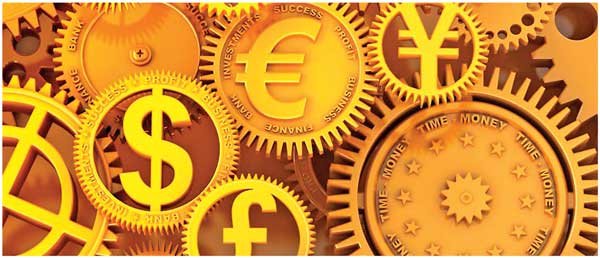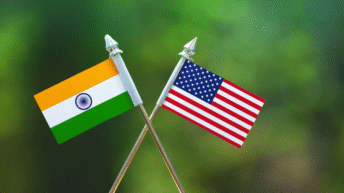
Whatever we think of it, money rules the world since thousands of years in a form or another. It evolved from a material of value (whether cowrie shells, bits of precious metals or other) to a symbol of value, redeemable either in goods held as equivalent or in a permanent standard (gold or silver usually, as well as other metals of lesser rarity or quality).
Since social organization reached the level of complexity at which mere barter was no longer adequate for trade to meet diversifying needs, the state became the guarantor and issuer of currency. Not only did the value of a particular coin depend greatly on the strength and reliability of the issuer which might also have been a business house, an early ancestor of modern banks but the inevitable process of inflation (loss of value of the medium of exchange) became visible to all. More and more transactions had to be conducted in promissory notes of some kind (forerunners of banknotes and cheques) due to the cumbersome weight of the metal and to the risks associated to its transport which remain obstacles to the often heard demand for a return to the gold standard.
Since President Nixon took the US Dollar, the pillar of the Bretton Woods regime, off the gold standard and let it float in 1971 the global financial system has been in effect held at ransom by the US Federal Reserve and Treasury which have used the American ‘exorbitant privilege’ to export its inflation and ballooning deficits to the outside world by purchasing all the goods and services consumed by the US population in exchange for payment in a fiat currency whose value is determined by the reputed economic, military and political power of its issuer. This mechanism has been described technically by many economists like Michael Hudson, Michael Wolf and Catherine Austin Fitts who have shown its flaws and its ultimate unsustainability. The US which accounted for about 40% of the world’s production of goods and services in 1950 only generates 20% of the global GDP at present and its share of the economic pie is shrinking rapidly.
Much of the US economy is financial, which means that it squeezes profits out of speculation fed by money printing without producing any new real wealth. Most of the industrial production has been outsourced to other nations with cheaper workforces and less labour regulations, such as China.
The 2008 global financial crisis and the current COVID-linked contraction have led to record printing of (digital) money by the world’s leading economies It is estimated that 19 trillion fiat dollars have been injected so far to keep the stock markets from crashing and hundreds of million people from becoming destitute. Runaway money creation has helped bloat the ‘on-screen’ fortunes of the mega-corporations and their owners with privileged access to interest-free credit and in which the central banks have actually invested to keep them afloat.
The debt accumulated by states on top of huge previous obligations can realistically never be repaid but the pressure to make interests payments and meet basic expenses will force most governments to raise taxes and lower social benefits while wages will shrink both due to inflation and to the surging number of the unemployed, swollen by mass immigration from even poorer regions of the world.
Ironically it has been calculated that in the USA alone the increase in the wealth of the billionaire plutocracy equals the amount that is required for the latest rescue and stimulus package being considered to save the national economy.
The digital revolution has provided a key to lock earnings into a virtual safe in the form of crypto-currencies of which the best known is the Bitcoin. It has recently reached a value of almost 20 000 USD per coin and is regarded by many experts as headed for 100 000. Only 21 million bitcoins can ever be ‘mined’ so that they can never be produced beyond this algorithmic limit. It is completely independent of any government policies and solely ruled by the law of supply and demand, controlled by all its owners and automatically audited through the blockchain process every time a transaction is carried out, as opposed to the US Federal Reserve which has never been fully audited and is not even formally a government agency although public trust in its solvency inevitably hinges on the (fast eroding) credibility of the American State.
The unparalleled rise in value of Bitcoin has led many major investment companies to take stakes in it. Financial professionals like Max Keiser, titans of the fund management sector such as Paul Tudor Jones have expressed their hopes and trust in this crypto-currency and the CEO of the 7 trillion US$ Blackrock Group Larry Fink has, among others acknowledged the growing power of the Bitcoin and its potential to displace the US Dollar as the world’s main reserve currency. Mark Carney, the former head of the Bank of England had called for a global digital substitute for the US greenback in 2019 at the Jackson Hole central bankers meeting.https://www.bloomberg.com/news/articles/2019-08-25/carney-s-libra-idea-shows-how-the-dollar-is-everyone-s-problem
The US and other leading states are concerned about the ability of bitcoin to bypass control mechanisms for financial transactions such as SWIFT and regulatory agencies and all plan to issue their own digital currencies. They also prevented so far companies like Facebook and Telegrams from launching their own crypto-instruments. However governments face the paradox that the power of the crypto economy lies in the freedom it grants from banking controls and state manipulation including the power to expropriate assets for political or other reasons.
Dollars, Euros, Pounds Sterling and Yens already are digital currencies de facto but they are issued and controlled by central banks, largely through the agency of commercial banks and don’t change the traditional nature of the monetary systems. By definition therefore they are not alternatives to bitcoins but by replacing paper notes they make it possible for the financial authorities to monitor all the resources of citizens and hence considerably reduce economic freedom.
States wishing and needing to break free from the yoke of the Dollar (effectively the stranglehold of the US financial authorities) such as China, Russia, Venezuela and Iran increasingly use Bitcoin but are or will also be ‘going digital’ with their respective currencies and turning to non-dollar denominated international trade.
We all know that a very large percentage of the global economy is in the ‘shadow’ zone and consists of unreported transactions and profits. Illegal and tax-evading capital is usually held under the many offshore jurisdictions set up by various states in order to benefit from investments that would otherwise go to other countries. Major ‘global’ banks are known to launder and manage enormous amounts of ‘black money’ with the implicit approval of their ‘parent’ and host governments. The parallel financial domain is fast moving to the cryptosphere where banks and their expensive services are no longer needed and on which states have no effective control.
In conclusion the next few years will witness rising competition between central bank digital currencies and crypto-coins while gold should remain, though to a lesser degree, a reserve of last resort to anchor value and correct the intrinsic volatility of cryptos.
In this changing scenario India has a unique position. Its citizens hold the largest amount of gold in private hands in the world and many Indians, at home and abroad are recognized experts and innovators in the field of crypto-finance in general and bitcoin in particular for which they have come up with ingenious applications and devices. The age-old Indian habit of practicing self-custody of assets comes in handy in this age in which banks will rapidly lose much of their function and relevance.






I concur with the author with most of the points highlighted in the article. The PRC is attempting very hard to internationalize its own currency. But even if a group of nations within China’s sphere of influence accept PRC’s attempted ” replacement of US Dollar ” The importance of USD as a universally accepted medium of exchange can never be overstated.
I agree with the author that India’s gold locked up in temples et al , MUST be put to any use in national interests.